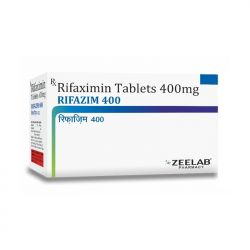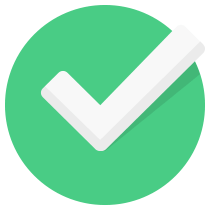Download India's most affordable pharmacy app
- Compare with medicine prices
- Save upto 90% on your medicine bills
COMPOSITION:
Rifaximin (400mg)DESCRIPTION:
Gifaxin 400 Tablet is an antibiotic medication used to treat a variety of bacterial infections, particularly those caused by susceptible organisms. It contains the active ingredient Cefixime, a third-generation cephalosporin antibiotic that works by inhibiting bacterial cell wall synthesis, ultimately leading to bacterial cell death. Gifaxin 400 is commonly prescribed for respiratory, urinary tract, and skin infections.
Uses of Gifaxin 400 Tablet
- Treatment of respiratory tract infections, including bronchitis and pneumonia.
- Management of urinary tract infections (UTIs), such as cystitis and pyelonephritis.
- Treatment of skin and soft tissue infections.
- Effective against certain ear infections (otitis media) caused by susceptible bacteria.
How Gifaxin 400 Tablet Works
Gifaxin 400 Tablet contains Cefixime, which works by binding to specific proteins in the bacterial cell wall. This inhibits cell wall synthesis, causing the bacteria to weaken and eventually die. It is effective against a broad spectrum of bacterial infections, particularly those caused by Gram-positive and Gram-negative organisms.
Benefits of Gifaxin 400 Tablet
- Highly effective against a variety of bacterial infections.
- Offers broad-spectrum antibacterial activity against both Gram-positive and Gram-negative bacteria.
- Convenient dosing, usually taken once a day.
- Helps reduce the duration and severity of infections, promoting faster recovery.
How to Take Gifaxin 400 Tablet
Take Gifaxin 400 Tablet exactly as prescribed by your doctor. It is usually taken once daily, with or without food. Swallow the tablet whole with a glass of water. Do not crush or chew the tablet. Complete the full course of treatment as prescribed, even if you start feeling better, to avoid the risk of antibiotic resistance.
Side Effects of Gifaxin 400 Tablet
- Common: Diarrhea, nausea, stomach pain, and headache.
- Less Common: Dizziness, rash, and allergic reactions such as itching or swelling.
- Rare: Severe allergic reactions (anaphylaxis), liver damage, and blood disorders (e.g., low white blood cell count).
Safety Advice
- Inform your doctor if you have any history of allergies, especially to cephalosporin antibiotics.
- Consult your doctor before using Gifaxin 400 Tablet if you have a history of liver or kidney problems.
- Do not stop taking the medication early, even if symptoms improve, to ensure the infection is fully treated.
- Use with caution in pregnant or breastfeeding women; consult your healthcare provider.
- Notify your doctor if you experience any signs of allergic reactions, such as rash, swelling, or difficulty breathing.
Frequently Asked Questions (FAQs)
Q: Can I take Gifaxin 400 Tablet with food?
A: Yes, Gifaxin 400 Tablet can be taken with or without food. However, taking it with food may help reduce stomach upset.
Q: What should I do if I miss a dose of Gifaxin 400 Tablet?
A: If you miss a dose, take it as soon as you remember. If it's almost time for the next dose, skip the missed dose. Do not take two doses at once.
Q: Can I drink alcohol while taking Gifaxin 400 Tablet?
A: It is advisable to avoid alcohol while taking this medication, as it may increase the risk of side effects such as stomach upset.
Q: How long will it take for Gifaxin 400 Tablet to work?
A: You may start noticing improvements within a few days of starting the medication. Complete the full course as prescribed to fully treat the infection.









 Added!
Added!